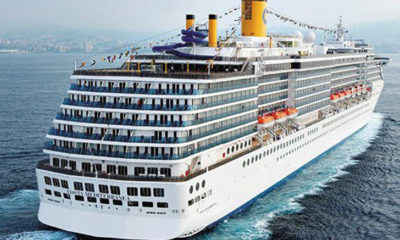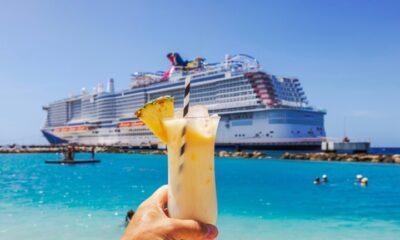
Wikipedia
Discover the hidden jewels of the United States through its lesser-known islands, each offering unique experiences far removed from the typical tourist destinations. From the secluded beaches and rich cultural heritage of Daufuskie Island in South Carolina to the rugged wilderness of Kodiak Island in Alaska, these islands are treasures waiting to be explored. Whether you’re seeking tranquility on the pristine shores of Cumberland Island in Georgia, adventure in the wilds of Isle Royale in Michigan, or a step back in time on Mackinac Island in Michigan, there’s an island for every type of traveler. Experience the untouched beauty of the Channel Islands in California, the historical intrigue of Tangier Island in Virginia, and the welcoming spirit of the San Juan Islands in Washington. Each island offers a unique blend of natural beauty, history, and culture, promising unforgettable experiences for those willing to venture off the beaten path.
Daufuskie Island, South Carolina
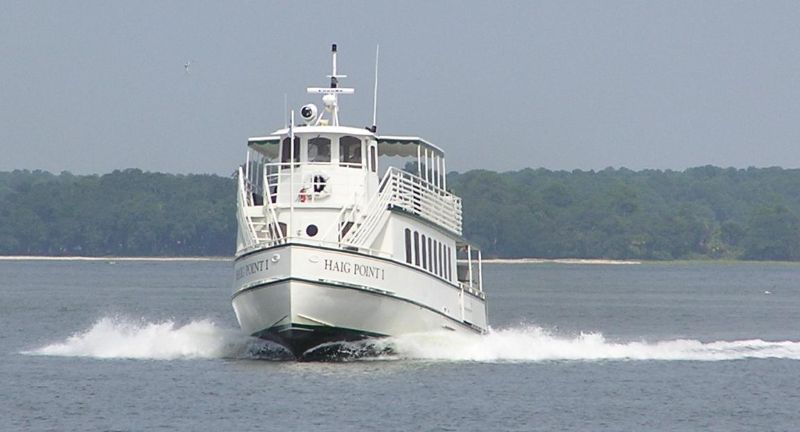
Wikipedia
Daufuskie Island is a hidden gem accessible only by ferry, where the echoes of the Gullah culture and history are still alive. Without bridges connecting it to the mainland, the island offers a unique escape from the hustle and bustle of daily life. Visitors can explore the island’s art galleries, rum distillery, and historical sites, including the First Union African Baptist Church, on a golf cart. The island’s secluded beaches and lush landscapes provide a serene backdrop for relaxation and nature walks. Daufuskie Island represents a blend of natural beauty, history, and a tight-knit community, making it a must-visit for those seeking an authentic Lowcountry experience.
Block Island, Rhode Island

Wikipedia
Block Island, situated 12 miles off the Rhode Island coast, is a serene getaway known for its bicycling, hiking trails, and 17 miles of sandy beaches. The island’s dramatic cliffs, like those at Mohegan Bluffs, offer breathtaking views of the Atlantic Ocean, while the Great Salt Pond provides a haven for boaters and kayakers. Block Island maintains a delicate balance between preserving its natural landscapes and accommodating visitors, with conservation efforts ensuring that much of the island remains undeveloped. The historic Block Island North Light and the Southeast Lighthouse stand as testaments to the island’s maritime heritage. With a small-town atmosphere and a variety of local shops, restaurants, and inns, Block Island is an ideal destination for those looking to escape the busyness of everyday life.
Monhegan Island, Maine

Wikipedia
Monhegan Island, a small, rocky island ten miles from the nearest mainland, has long been a haven for artists and nature lovers. This car-free island is known for its towering cliffs, wild, untamed beauty, and a small year-round community that welcomes visitors with its quaint charm. Hiking trails wind through lush forests and along the dramatic coastline, offering stunning views and peaceful solitude. The island’s art colony, one of the oldest in the United States, is a testament to its inspiring landscape, with local galleries showcasing works by resident artists. Monhegan Island is a place where time slows down, allowing visitors to connect with nature, art, and the simplicity of island life.
Chincoteague Island, Virginia

Wikipedia
Chincoteague Island, famous for its wild ponies and the annual pony swim and auction, is a serene beach destination on Virginia’s Eastern Shore. Adjacent to the Chincoteague National Wildlife Refuge, the island offers stunning landscapes, miles of unspoiled beaches, and a variety of wildlife, including migratory birds. The small town charm, with its local shops, seafood restaurants, and cozy accommodations, invites visitors to relax and enjoy the slower pace of island life. Outdoor activities abound, from biking and hiking on nature trails to kayaking in the waters around the island. Chincoteague’s combination of natural beauty, wildlife viewing opportunities, and community events like the Pony Swim make it a unique and memorable destination for families and nature enthusiasts alike.
Santa Catalina Island, California

Wikipedia
Santa Catalina Island, a rocky island off the coast of California, offers an array of outdoor adventures, from hiking and zip-lining to snorkeling and scuba diving in its crystal-clear waters. The island’s main town, Avalon, exudes a Mediterranean charm, with its waterfront promenade, quaint shops, and the iconic Casino Building, which houses a museum and theater. Beyond Avalon, the island’s wild interior is a haven for wildlife and offers spectacular views from trails that crisscross the landscape. Two Harbors, the island’s other village, is a quieter alternative, offering a more laid-back vibe and access to remote beaches and coves. Whether seeking adventure, relaxation, or a glimpse into California’s glamorous past, Santa Catalina Island provides a perfect escape with its unique blend of natural beauty and history.
Channel Islands, California

Wikipedia
The Channel Islands National Park, off the coast of Southern California, encompasses five remarkable islands, each offering unique landscapes and ecosystems. These islands, isolated from the mainland for thousands of years, harbor a wealth of endemic species and pristine natural habitats. Visitors can explore rugged coastlines, hike scenic trails, and discover secluded beaches, making it a paradise for nature lovers and outdoor enthusiasts. The park’s waters are a diver’s dream, with kelp forests, sea caves, and vibrant marine life. Whether camping under the stars, kayaking through sea caves, or simply enjoying the solitude, the Channel Islands offer an unparalleled experience of California’s wild beauty.
Fire Island, New York

Wikipedia
Fire Island, a slender barrier island off the coast of Long Island, New York, is known for its vibrant LGBTQ+ community, pristine beaches, and the iconic Fire Island Lighthouse. The island offers a retreat from urban life, with no cars allowed, making its sun-drenched beaches and wooden boardwalks all the more peaceful. It’s a place where visitors can enjoy the natural beauty of the dunes and maritime forests, partake in lively nightlife, or find solitude in more secluded areas. The communities of Cherry Grove and The Pines are popular destinations for their inclusive atmosphere and social scene. Fire Island’s unique blend of natural beauty, community spirit, and openness make it an essential destination for those seeking both relaxation and celebration.
Pelee Island, Ontario, Canada

Wikipedia
Pelee Island, located in the western half of Lake Erie, is the largest island in the lake and part of Ontario, Canada, yet it shares a close connection with the United States geographically and culturally. Renowned for its wineries and vineyards, Pelee Island offers a tranquil escape with a mild climate that supports a rich diversity of flora and fauna. The island is a bird watcher’s paradise, especially during the spring and fall migrations, when hundreds of bird species can be observed. Outdoor activities include cycling around the island, hiking nature trails, and enjoying the quiet beaches. Pelee Island’s laid-back atmosphere, combined with its natural beauty and wildlife, makes it an ideal destination for those seeking a peaceful retreat.
Culebra, Puerto Rico

Wikipedia
Culebra, a small island off the eastern coast of Puerto Rico, is renowned for Flamenco Beach, often ranked among the world’s best beaches for its white sands and crystal-clear waters. Unlike the main island, Culebra has resisted large-scale tourist development, preserving its serene beauty and relaxed atmosphere. The island is a haven for snorkelers and divers, with healthy coral reefs and a rich marine life, including sea turtles. Besides Flamenco, Culebra boasts other stunning beaches like Tamarindo and Zoni, offering solitude and unspoiled nature. Culebra’s commitment to conservation and its laid-back vibe make it a perfect getaway for those looking to escape the crowds and connect with the natural beauty of the Caribbean.
Vieques, Puerto Rico

Wikipedia
Vieques, an island municipality of Puerto Rico, is celebrated for its bioluminescent Mosquito Bay, the brightest in the world, where visitors can kayak at night to witness the glowing waters. The island’s history as a former naval base has left it with unspoiled beaches and lands, now transformed into wildlife refuges. Vieques offers a mix of secluded sandy beaches, such as Playa Negra with its unique black sand, and the wild horse populations that roam freely. The slow pace of life and the absence of large hotels or resorts encourage a more intimate experience with nature and local culture. Vieques represents a blend of natural wonders, historical intrigue, and peaceful retreats, making it an ideal destination for those seeking both adventure and relaxation.
Lopez Island, Washington

Wikipedia
Lopez Island, the third largest of the San Juan Islands in Washington State, is often called “The Friendly Isle” for its welcoming community and laid-back lifestyle. Known for its rolling farmlands, open spaces, and scenic shorelines, Lopez offers a peaceful retreat for cyclists, hikers, and nature lovers. The island’s charm lies in its simplicity, with small local businesses, art galleries, and farm-to-table dining that reflect the community’s commitment to sustainability and local craftsmanship. Kayaking and whale watching are popular activities, providing opportunities to explore the island’s marine environment and wildlife. Lopez Island is a place where visitors can slow down, enjoy the serene landscapes, and engage with a community that embodies the spirit of the Pacific Northwest.
Orcas Island, Washington

Wikipedia
Orcas Island, the largest of the San Juan Islands, is celebrated for its diverse landscape, from the old-growth forests of Moran State Park to the summit of Mount Constitution, offering panoramic views of the surrounding archipelago and beyond. The island’s cultural scene is vibrant, with art galleries, theaters, and music festivals that showcase local talent and creativity. Eastsound, the island’s main village, is a hub of activity with shops, restaurants, and a historical museum that tells the story of Orcas Island. Outdoor enthusiasts can enjoy hiking, biking, kayaking, and sailing in the island’s pristine natural settings. Orcas Island’s blend of natural beauty, arts, and community spirit makes it a compelling destination for those seeking a balanced mix of relaxation and adventure in the Pacific Northwest.
Kodiak Island, Alaska

Wikipedia
Kodiak Island, located in the Gulf of Alaska, is the second-largest island in the United States and is renowned for its rugged beauty and abundant wildlife, particularly its population of brown bears. The island’s diverse ecosystems, from dense forests to alpine meadows, offer ample opportunities for outdoor activities such as hiking, fishing, and wildlife viewing. Kodiak’s rich history is reflected in its Russian heritage, visible in the Russian Orthodox Church and the Baranov Museum, which chronicles the island’s era as a center of the Russian fur trade. The Kodiak National Wildlife Refuge, covering much of the island, provides a sanctuary for bears, bald eagles, and other wildlife, making it a prime location for nature enthusiasts and photographers. Kodiak Island’s combination of natural wonders, cultural heritage, and outdoor adventure makes it an unforgettable destination for those seeking to explore Alaska’s wild beauty.
Diomede Islands, Alaska

Wikipedia
The Diomede Islands consist of Little Diomede (U.S.) and Big Diomede (Russia), sitting in the middle of the Bering Strait and separated by the International Date Line. Little Diomede’s Ingalikmiut Eskimo community lives in one of the most remote and challenging environments on earth, with traditions and lifestyles that have adapted to the Arctic conditions. The islands are fascinating for their proximity to each other, yet the time difference between them is 21 hours. During winter, an ice bridge sometimes forms between the islands, symbolizing a tangible connection despite the political divide. The Diomede Islands offer a unique perspective on the complexities of international borders, the resilience of indigenous communities, and the stark beauty of the Arctic landscape.
Nantucket, Massachusetts

Wikipedia
Nantucket, an island off the coast of Massachusetts, is renowned for its pristine beaches, historic lighthouses, and cobblestone streets, offering a blend of natural beauty and rich history. Once the whaling capital of the world, the island’s maritime heritage is preserved in the Whaling Museum, which features artifacts and exhibits on the industry’s history. The island’s conservation efforts have protected its landscapes, allowing visitors to enjoy unspoiled beaches, dune-backed shores, and rare wildlife habitats. Nantucket’s charming town center, with its boutiques, galleries, and restaurants, reflects the island’s upscale yet laid-back lifestyle. Whether exploring its historic sites, enjoying maritime activities, or simply relaxing by the sea, Nantucket provides a quintessential New England island experience.
Martha’s Vineyard, Massachusetts

Wikipedia
Martha’s Vineyard, located south of Cape Cod in Massachusetts, is an island known for its laid-back lifestyle, beautiful beaches, and as a summer haven for celebrities and presidents alike. The island’s diverse communities, from the historic whaling town of Edgartown to the colorful gingerbread cottages of Oak Bluffs, offer a rich cultural tapestry and history. The Vineyard’s landscapes are just as varied, with rolling farmlands, serene beaches, and dramatic cliffs. Cultural events, art galleries, and local cuisine reflect the island’s eclectic and inclusive community spirit. Martha’s Vineyard’s unique charm lies in its ability to blend a rich history and cultural depth with the natural beauty of New England’s coastline, making it a beloved destination for generations of visitors.
Lanai, Hawaii
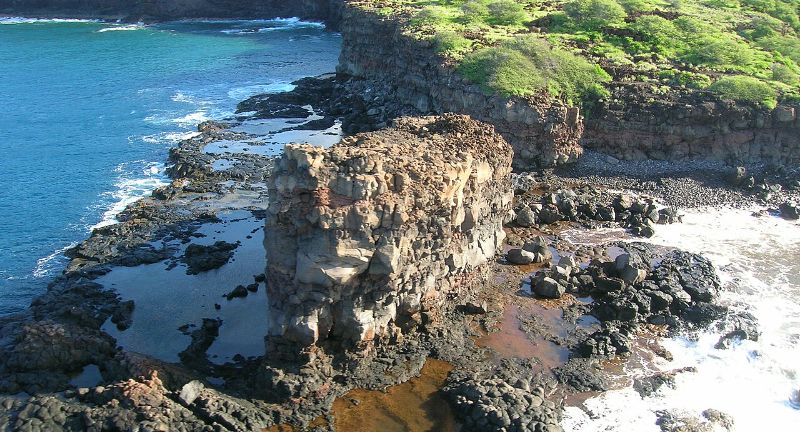
Wikipedia
Lanai, once known as the Pineapple Island due to its past as a pineapple plantation, is now a place of luxury resorts and untamed wilderness, offering a stark contrast to the more visited Hawaiian islands. With only 30 miles of paved roads, much of Lanai remains wild and pristine, inviting exploration and adventure in places like the rugged Garden of the Gods and the shipwreck-strewn shores of Shipwreck Beach. The island’s luxury resorts provide a haven of relaxation and world-class amenities, while still respecting the natural beauty and tranquility of the surroundings. For those seeking a more adventurous experience, Lanai’s backcountry roads and trails offer access to remote landscapes and stunning views. Lanai is a destination that combines exclusivity with adventure, offering a unique Hawaiian experience away from the crowds.
Dry Tortugas, Florida

Wikipedia
Dry Tortugas National Park, located 70 miles west of Key West, is an archipelago of seven islands renowned for its crystal-clear waters, vibrant coral reefs, and the historic Fort Jefferson. This remote park is accessible only by boat or seaplane, offering an unparalleled sense of adventure and isolation. Snorkelers and divers can explore the underwater treasures of the coral reefs and shipwrecks, teeming with marine life. The massive yet unfinished Fort Jefferson narrates stories of the Civil War and America’s coastal defense. Dry Tortugas is a paradise for bird watchers, history enthusiasts, and those seeking tranquility amidst nature’s unspoiled beauty.
Molokai, Hawaii

Wikipedia
Molokai, often referred to as the “Friendly Isle,” is the fifth-largest island in the Hawaiian chain and is known for its preservation of Native Hawaiian traditions and a slower pace of life. Unlike its more developed neighbors, Molokai has no traffic lights or high-rise buildings, offering a glimpse into Hawaii’s past. The island’s landscape features pristine beaches, the world’s highest sea cliffs, and the historic Kalaupapa National Historical Park, a former leprosy settlement. Molokai’s community is deeply connected to the land, with many residents living off the grid and practicing traditional Hawaiian culture. For visitors seeking an authentic Hawaiian experience, Molokai offers a unique opportunity to connect with the islands’ heritage, natural beauty, and the aloha spirit.
Sapelo Island, Georgia

Wikipedia
Sapelo Island, a state-protected barrier island off the coast of Georgia, is accessible only by ferry, offering a glimpse into a world untouched by the passage of time. The island is home to the Hog Hammock community, one of the last remaining Gullah-Geechee communities in the South, whose residents are direct descendants of enslaved Africans. Sapelo’s rich cultural heritage is complemented by its natural beauty, with pristine beaches, maritime forests, and salt marshes. The Reynolds Mansion and the Sapelo Island Lighthouse are among the historical landmarks that visitors can explore. Sapelo Island provides an immersive experience into the history, culture, and natural beauty of Georgia’s coastal islands, making it a must-visit for those interested in the preservation of African American heritage and natural landscapes.
Cumberland Island, Georgia
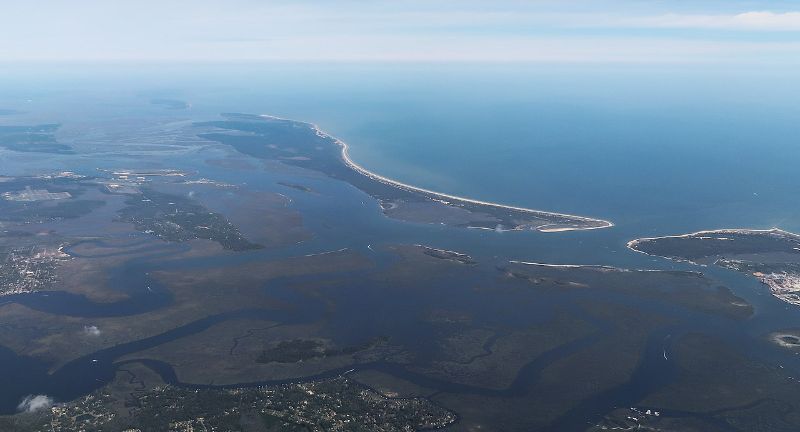
Wikipedia
Cumberland Island is Georgia’s largest barrier island and a place where wild horses roam free among ruins of grand mansions, whispering the tales of a bygone era. This national seashore offers over 17 miles of pristine beaches, dense maritime forests, and marshy wetlands, providing a perfect setting for hiking and wildlife observation. The island’s rich history is evident in the Dungeness Ruins, the former Carnegie family mansion, and the First African Baptist Church, where John F. Kennedy Jr. was married. Only accessible by ferry, Cumberland Island limits the number of visitors, preserving its tranquil and unspoiled environment. Whether you’re interested in backpacking, camping under the stars, or simply enjoying a day of solitude on a secluded beach, Cumberland Island offers an unforgettable experience.
Isle Royale, Michigan

Wikipedia
Isle Royale National Park, nestled in the cold waters of Lake Superior, offers an isolated wilderness retreat far removed from the trappings of modern life. This rugged island is known for its forested wilderness, scenic shorelines, and a diverse array of wildlife, including moose and wolves, which are part of a closely observed ecosystem study. With over 165 miles of hiking trails, visitors can explore the island’s natural beauty, from dense forests to crystal-clear lakes. The park encourages low-impact camping and backcountry exploration, providing a unique opportunity for solitude and connection with nature. Accessible only by ferry, seaplane, or private boat, Isle Royale is a destination for those seeking adventure and a deep sense of peace amidst the wilderness.
Smith Island, Maryland

Wikipedia
Smith Island, located in the Chesapeake Bay, is Maryland’s last inhabited island accessible only by boat, known for its unique culture and the famous Smith Island Cake. The island’s residents, primarily watermen, maintain a way of life that revolves around the bay’s crabbing and oystering seasons. Smith Island’s small communities, such as Ewell, Tylerton, and Rhodes Point, are interconnected by marshes and waterways, offering visitors a glimpse into a lifestyle dictated by the natural environment. The island’s natural beauty is underscored by its serene marshlands, birdlife, and unspoiled waterways, ideal for kayaking and bird watching. A visit to Smith Island offers an immersive experience into Chesapeake Bay culture, history, and an opportunity to taste its famed multi-layered cake, a symbol of the island’s culinary heritage.
Tangier Island, Virginia
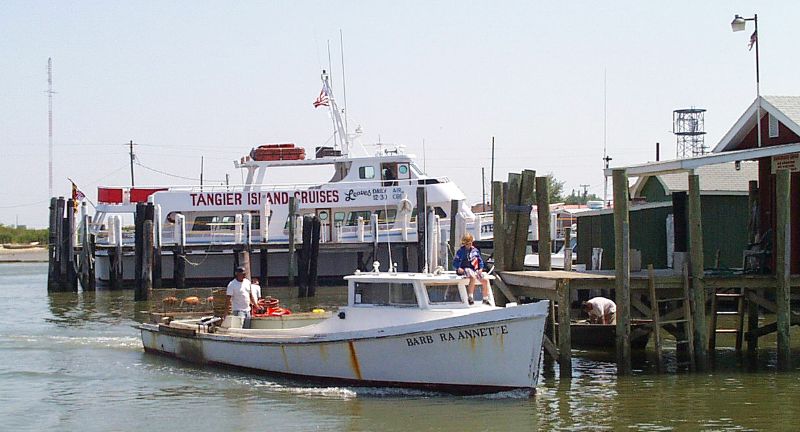
Wikipedia
Tangier Island, sitting in the heart of the Chesapeake Bay, is a historic fishing community where time seems to stand still. Known for its residents’ unique Elizabethan dialect and reliance on the bay for crabbing and oystering, Tangier offers a rare glimpse into a way of life that has persisted for centuries. The island is grappling with the challenges of rising sea levels, making it an important case study for environmental scientists and a poignant reminder of the impacts of climate change. Visitors can explore the island by golf cart, visit the Tangier History Museum to learn about its rich heritage, and enjoy fresh seafood at local restaurants. Tangier Island is not only a destination for those interested in history and culture but also for those looking to understand the delicate balance between community, tradition, and the environment.
Mackinac Island, Michigan
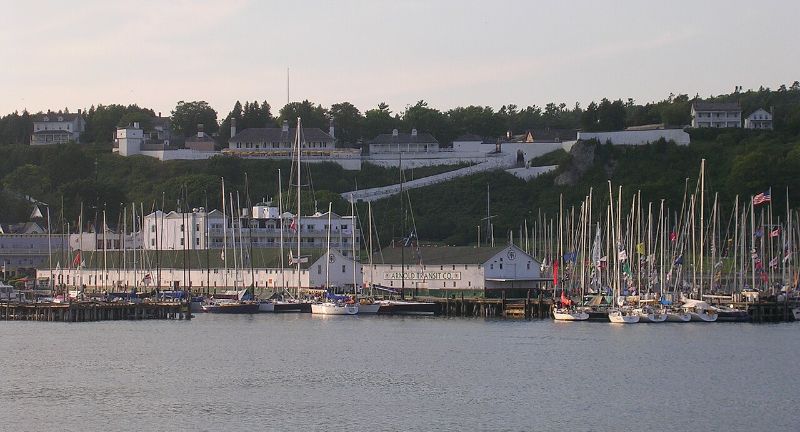
Wikipedia
Mackinac Island, a timeless retreat in Lake Huron, is famed for its ban on motor vehicles, where horse-drawn carriages and bicycles offer a quaint mode of transportation. The island’s rich history is preserved in Fort Mackinac, which offers live historical reenactments and breathtaking views of the surrounding waters. Mackinac’s downtown area, with its historic storefronts, fudge shops, and the grandiose Grand Hotel, provides a glimpse into a bygone era. The island’s interior is crisscrossed with trails that lead to natural wonders like Arch Rock and tranquil forested areas, inviting exploration. Mackinac Island’s unique blend of natural beauty, history, and old-world charm make it a captivating destination for visitors seeking a break from the modern world.
Conclusion

Shutterstock
Exploring these lesser-known American islands offers a unique opportunity to discover the vast diversity and rich history that lie beyond the mainland’s borders. Each island, with its distinct character and charm, invites visitors into a world of unspoiled natural beauty, vibrant communities, and cultural treasures waiting to be uncovered. Whether you’re drawn to the serene beaches of the Atlantic, the rugged wilderness of the Pacific, or the tropical paradises of the Caribbean and Hawaii, these islands provide a haven for adventure, relaxation, and exploration. By venturing off the beaten path to these hidden gems, travelers can experience the true essence of escape and the enduring allure of America’s island landscapes.





































